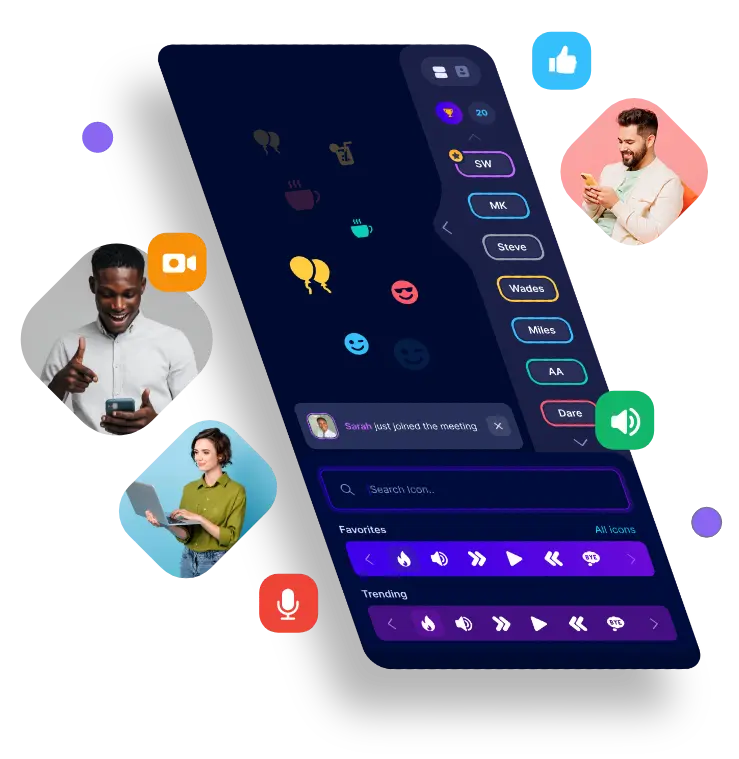
In today's ever-evolving educational landscape, teachers are faced with the challenge of adapting to remote teaching while also continuing their professional development.
This article explores the concept of Continuing Professional Development (CPD) and its importance for teachers, especially in the context of remote learning. We will delve into the challenges that remote teaching presents for CPD, the benefits of incorporating CPD into remote teaching, different forms of CPD available, ways to stay motivated, challenges of implementation, and how schools and organizations can support CPD for remote teaching.
Join us as we navigate this essential topic together.
What is Continuing Professional Development (CPD)?
Continuing Professional Development (CPD) refers to the ongoing process of learning and developing skills within a specific profession.
CPD plays a crucial role in ensuring that professionals remain relevant and competent in their respective fields. By engaging in CPD activities, individuals can stay abreast of the latest trends, technologies, and best practices within their industry. This continuous learning process not only enhances their skill set but also equips them with the knowledge needed to meet the evolving demands of the profession.
Helping companies with CPD is one of our focuses at Townhall and one of the reasons why we've designed our Zoom engagement app solution.
Why is CPD Important for Teachers?
CPD is crucial for teachers to continually improve their skills, adapt to evolving industry demands, and foster a growth mindset towards continuous learning.
Continuing Professional Development (CPD) enables educators to stay abreast of the latest teaching methodologies, educational technologies, and student assessment techniques, ensuring they are equipped to meet the diverse needs of today's learners.
By engaging in CPD activities, teachers can enhance their subject knowledge, pedagogical skills, and classroom management strategies, ultimately leading to improved student outcomes and overall educational quality.
CPD enables teachers to cultivate a growth mindset, embracing challenges as opportunities for growth and development rather than obstacles.
How Has the Teaching Landscape Changed Due to Remote Learning?
The teaching landscape has undergone significant transformations due to the widespread adoption of remote learning, which has been accelerated by technological advancements and global issues.
Technology has revolutionized the way educators reach their students, opening up a plethora of new tools and methods for teaching. This shift has prompted a reevaluation of traditional educational approaches, leading to more interactive and engaging teaching practices. With the global challenges such as pandemics and natural disasters necessitating distance learning, educators worldwide have had to adapt swiftly to ensure continuity in education. This adaptation has not only changed the way lessons are delivered but also highlighted the importance of flexibility, creativity, and adaptability in educational practices.
What Challenges Does Remote Teaching Present for CPD?
Remote teaching poses unique challenges for CPD, such as limited access to in-person resources, the need for continuous learning through online platforms, and adapting to virtual educational environments.
One significant obstacle faced by educators in remote teaching is the reliance on online resources for their professional development. Without the option of attending physical workshops or conferences, teachers must seek out digital materials and courses to stay updated on educational best practices and trends.
Continuous learning becomes paramount in this context, as the field of education is constantly evolving. Educators must invest time and effort in exploring online platforms that offer courses and resources tailored to their specific needs and areas of interest.
Adapting to virtual educational environments requires educators to master a whole new set of skills, from facilitating engaging online discussions to utilizing digital tools effectively. This shift demands a willingness to embrace change and a proactive approach towards professional development in the digital age.
Zoom meeting engagement through gamification has been our focus at Townhall, and why we've designed our Zoom engagement-boosting app solution.
What are the Benefits of Incorporating CPD into Remote Teaching?
Integrating CPD into remote teaching offers numerous advantages, including enhancing technological skills, fostering adaptability, and promoting collaboration among educators.
By participating in CPD opportunities, educators can stay up-to-date with the latest educational technology tools and platforms, which can greatly improve their online teaching delivery. CPD encourages teachers to adapt to new teaching methodologies and approaches, making them more flexible and responsive to changing educational requirements. Through CPD, educators have the chance to connect with peers from around the world, share best practices, and collaborate on innovative teaching strategies, leading to a more vibrant and progressive teaching community.
Improves Technological Skills
Enhancing technological skills through CPD equips teachers with the knowledge and proficiency to leverage online resources effectively in their educational practices.
This continuous professional development approach enables educators to stay abreast of the latest trends in educational technology, enabling them to integrate innovative tools and digital platforms into their teaching methodologies.
By engaging in CPD, teachers can explore various online resources tailored to enhance student learning experiences, such as interactive multimedia materials, educational apps, and virtual simulations. They can also learn to use advanced technology tools for assessments, data analysis, and creating engaging digital content to make their lessons more engaging and interactive.
Enhances Adaptability and Flexibility
CPD enhances adaptability and flexibility in educators, enabling them to navigate the challenges of remote teaching environments and evolving educational landscapes.
This continuous professional development allows teachers to stay abreast of the latest technological advancements and pedagogical strategies. By participating in CPD programs, educators can broaden their skill set, experiment with innovative teaching methods, and effectively integrate digital tools into their classrooms. CPD encourages teachers to reflect on their practices, embrace a growth mindset, and adapt their instructional approaches to meet the diverse needs of their students.
Promotes Collaboration and Networking
CPD encourages collaboration and networking among educators, fostering a supportive community that promotes knowledge sharing, professional growth, and a collective growth mindset.
Teachers engaging in continuous professional development build strong relationships with their peers, leading to the exchange of innovative pedagogical practices, research findings, and classroom strategies. This collaborative environment not only enhances teaching effectiveness but also encourages educators to stay current with the latest advancements in their field. Through shared experiences and resources, educators can collectively address challenges, brainstorm solutions, and cultivate a growth-oriented mindset focused on lifelong learning and improvement.
What are the Different Forms of CPD for Remote Teaching?
Various forms of CPD for remote teaching include engaging in online courses, attending webinars, and participating in virtual conferences to enhance professional development.
Online courses offer educators the flexibility to learn at their own pace, diving deep into specific topics like inclusive teaching methods or tech integration strategies. Webinars provide real-time interactions with experts, fostering discussions and Q&A sessions that keep educators engaged. Virtual conferences create networking opportunities, allowing educators to connect with peers globally and gain fresh perspectives on teaching practices. Each mode of CPD plays a crucial role in equipping educators with the necessary skills and knowledge to excel in remote teaching environments.
Online Courses and Webinars
Engaging in online courses and webinars is a convenient and effective way for teachers to access CPD opportunities, expand their knowledge base, and enhance their teaching practices.
These platforms provide flexibility where educators can learn at their own pace and fit professional development around their busy schedules. Online courses and webinars offer a wide array of topics catering to various interests and teaching specializations, allowing teachers to explore new areas and stay current with educational trends. Through interactive online platforms, educators can engage with peers globally, fostering a collaborative learning environment and sharing best practices. These digital tools promote the development of technological skills, which are essential for modern teaching methods and classroom integration.
Virtual Conferences and Workshops
Participating in virtual conferences and workshops enables educators to engage in collaborative learning, gain insights from industry experts, and cultivate a growth mindset toward professional development.
One of the key advantages of virtual events is the enhanced networking opportunities they provide for educators. Through online platforms, teachers can connect with colleagues from around the world, expanding their professional circle and fostering meaningful relationships.
Knowledge exchange is another significant benefit, where educators have the chance to learn from leading experts in the field, gaining valuable perspectives and innovative strategies to apply in their teaching practices. Virtual conferences and workshops promote a growth-oriented perspective by offering diverse sessions and resources that encourage continuous learning and skill development in the dynamic landscape of remote teaching.
Collaborative Learning Communities
Participation in collaborative learning communities enables educators to engage in peer-to-peer knowledge sharing, collaborative projects, and continuous learning initiatives that enrich their professional development.
By actively participating in such communities, teachers not only benefit from shared best practices and innovative teaching techniques, but they also gain valuable insights from diverse perspectives and experiences. Through these interactions, educators can exchange ideas, seek feedback, and receive support from colleagues facing similar challenges.
The role of networking within these communities extends beyond knowledge sharing; it creates a sense of belonging and fosters a culture of continuous growth and improvement. Building strong relationships with peers in the field can lead to collaborative research projects, joint professional development opportunities, and a supportive network for navigating the ever-evolving landscape of education.
How Can Teachers Stay Motivated to Engage in CPD During Remote Teaching?
Maintaining motivation for CPD during remote teaching involves setting personal goals, seeking support, and reflecting on one's professional growth to sustain a proactive approach toward continuous learning.
Effective educators understand that continuous professional development is not just about acquiring new knowledge but also about staying motivated and engaged in the learning process. By setting specific and achievable goals, teachers can create a roadmap for their development and stay focused on their objectives.
Seeking mentorship and guidance from experienced colleagues or educational experts can provide valuable insights and support, helping educators navigate challenges and hone their skills. Reflecting on past achievements and milestones not only boosts confidence but also serves as a reminder of the progress made, fueling the drive to pursue further growth.
Setting Personal Goals
Establishing clear and achievable personal goals serves as a driving force for educators to stay motivated in their CPD journey, fostering a growth mindset and a sense of accomplishment.
Setting personal goals provides a roadmap for professional development by aligning individual aspirations with organizational objectives. This alignment ensures that educators are not only advancing personally but also contributing to the collective growth of the institution. Tracking progress towards these goals allows for regular reflection, highlighting achievements and areas for improvement. Embracing self-directed growth initiatives complements goal-setting by enabling educators to take ownership of their learning journey, reinforcing intrinsic motivation and dedication to continuous improvement.
Seeking Support and Accountability
Engaging with a supportive network and establishing accountability mechanisms can help teachers stay motivated and committed to their CPD endeavors during remote teaching.
Educators find that having mentors who provide guidance and feedback plays a vital role in their development, allowing them to gain valuable insights and navigate challenges effectively. Through peer support, teachers can share experiences, resources, and innovative practices, fostering a collaborative environment that promotes continuous learning. Being part of professional networks opens doors to diverse opportunities, connects educators with like-minded individuals, and facilitates the exchange of best practices and cutting-edge research.
Reflecting on Professional Growth
Regularly reflecting on one's professional growth, accomplishments, and areas for improvement can provide educators with the intrinsic motivation needed to pursue CPD initiatives and foster continuous development.
Through self-assessment, teachers can gain valuable insights into their teaching practices and identify areas where they excel or need improvement. Integrating feedback from peers, mentors, and students further enhances this reflective process by offering diverse perspectives and constructive criticism.
Cultivating a learning-oriented mindset helps educators embrace challenges, seek out new opportunities for growth, and adapt to evolving teaching methodologies and technologies in the dynamic educational landscape.
What Are the Challenges of Implementing CPD in a Remote Teaching Landscape?
Implementing CPD in a remote teaching landscape faces challenges such as resource constraints, lack of support, time management issues, and the need to maintain a healthy work-life balance.
One of the critical obstacles encountered when trying to implement continuous professional development (CPD) in remote teaching settings involves the scarcity of essential resources. In such scenarios, educators often find themselves grappling with limited access to updated educational materials, technological tools, and platforms necessary for effective CPD programs. This shortage can impede the development and enhancement of teaching skills and subject knowledge, hindering the overall quality of education provided to students.
Lack of Resources and Support
The lack of resources and support in remote teaching environments can hinder educators' CPD efforts, necessitating innovative solutions and collaborative initiatives to overcome these challenges.
Resource shortages and lack of adequate support can significantly impact the professional development of educators in remote teaching settings. This void demands a shift towards creative problem-solving approaches and a greater emphasis on peer assistance and community-driven support mechanisms. By fostering a culture of collaboration and knowledge-sharing, educators can collectively navigate through the hurdles posed by limited resources and support gaps, ultimately enhancing their CPD outcomes and improving the overall quality of remote teaching delivery.
Time Constraints and Workload
The time constraints and heavy workload associated with remote teaching can impede educators' participation in CPD activities, necessitating effective time management strategies and prioritization techniques.
Teachers in remote teaching settings often find themselves juggling various responsibilities, from preparing engaging online lessons to providing timely feedback to students. The pressure to deliver high-quality education while also staying updated with the latest teaching methodologies can be overwhelming. This, coupled with the lack of physical interactions with colleagues for support and collaboration, further compounds the challenges faced by educators.
- Amidst these demands, carving out time for continuous professional development becomes a balancing act that requires strategic planning and dedication.
- By incorporating self-care practices into their daily routines, educators can ensure better mental and physical well-being, which in turn enhances their ability to engage effectively in CPD activities.
Maintaining Work-Life Balance
Balancing professional development pursuits with personal well-being and work commitments is essential for educators engaged in remote teaching to maintain a sustainable work-life balance
Considering the demands of continuously evolving remote teaching environments, it becomes crucial for educators to prioritize self-care practices to avoid burnout and exhaustion. Integrating moments for relaxation, exercise, and hobbies into daily routines can help rejuvenate energy levels and foster mental well-being. Establishing clear boundaries between work and personal life is imperative to prevent work from encroaching on personal time. By setting specific work hours, creating a designated workspace, and disconnecting from work-related activities after designated hours, educators can safeguard their personal time.
Striking a balance between professional growth and personal well-being not only enhances productivity and job satisfaction but also contributes to overall happiness and fulfillment."
How Can Schools and Organizations Support CPD for Remote Teaching?
Schools and organizations can facilitate CPD for educators in remote teaching by providing access to resources, offering training opportunities, and creating a supportive environment that recognizes and encourages professional development.
By ensuring that teachers have access to up-to-date resources and materials tailored to remote teaching, educational institutions can enable educators to deliver high-quality instruction effectively.
Hosting regular training programs that cover topics such as technology integration, online pedagogy, and student engagement equips teachers with the necessary skills to excel in virtual classrooms.
Fostering a culture of continuous learning within the school community demonstrates the value placed on professional growth, motivating educators to seek ongoing improvement and innovation.
Helping companies with CPD is one of our focuses at Townhall and one of the reasons why we've designed our Zoom engagement-boosting app solution.
Providing Access to Resources and Training
Ensuring educators have access to relevant resources and training opportunities is essential for schools and organizations to support CPD in remote teaching environments, enabling continuous professional growth and skill enhancement.
This access goes beyond mere availability and delves into creating a conducive environment where educators can thrive. By offering a wide array of resources, ranging from online courses to workshops, institutions play a pivotal role in nurturing talent and fostering innovation in teaching methodologies.
Seamless access to training provisions enables teachers to stay abreast of the latest trends in education technology, pedagogy, and curriculum design, ultimately enhancing their effectiveness in the virtual classroom setting.
Encouraging and Recognizing Participation
Encouraging and recognizing educators' participation in CPD activities fosters a culture of continuous learning, professional development, and engagement in remote teaching environments.
By fostering a culture that values ongoing growth, educators feel motivated to enhance their skills and stay up-to-date with the latest teaching methodologies and technologies. This motivation leads to improved instructional practices and student outcomes. When educators receive acknowledgment for their commitment to CPD, it creates a sense of community recognition and appreciation, fostering a positive environment where collaboration and support thrive.
Promoting educators' involvement in CPD initiatives contributes to the overall establishment of a learning-centric culture within educational institutions. This culture prioritizes professional development and continuous improvement, benefiting not only the educators but also the students they serve. As a result, the educational institution as a whole becomes a hub of innovation, growth, and excellence.
Offering Flexible Scheduling and Support for Workload Management
Providing flexible scheduling options and supportive mechanisms for workload management can assist educators in balancing CPD commitments with their teaching responsibilities in remote learning contexts.
By offering educators the opportunity to adjust their schedules according to their specific CPD needs, institutions can enable them to engage more effectively in continuous professional development while maintaining their teaching duties. These provisions alleviate the pressures associated with time constraints, increasing job satisfaction and overall well-being. Through adaptable structures and robust support systems, teachers can experience reduced stress levels and prolonged career engagement, facilitating sustainable development and growth within the educational sector.
Frequently Asked Questions
What is Continuing Professional Development (CPD) in a Remote Teaching Landscape?
CPD in a remote teaching landscape refers to the ongoing process of learning and developing new skills, knowledge, and techniques for teaching in a virtual or online setting.
Why is CPD important for remote teaching?
CPD is important for remote teaching because it allows educators to continuously improve their teaching methods and adapt to the changing landscape of virtual education.
What are the benefits of CPD in a remote teaching landscape?
Some benefits of CPD in a remote teaching landscape include improved teaching skills, increased student engagement, and the ability to effectively use technology for teaching.
How can educators engage in CPD in a remote teaching landscape?
Educators can engage in CPD in a remote teaching landscape through online courses, webinars, virtual conferences, and self-directed learning activities.
Is CPD required for remote teaching?
While CPD may not be required in all cases, it is highly encouraged for educators in a remote teaching landscape to continuously improve their skills and adapt to the changing nature of virtual education.
Are there any challenges associated with CPD in a remote teaching landscape?
Some challenges of CPD in a remote teaching landscape may include finding relevant and high-quality resources, balancing CPD with other teaching responsibilities, and adapting to new technology or teaching methods.



